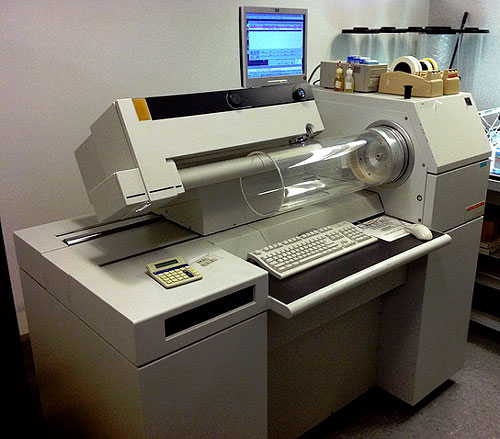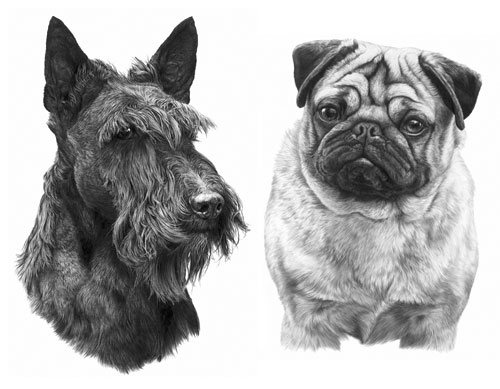Artur emailed me to ask about scanning. He’s disappointed with the results from his local copy shop, and also concerned that he might have to draw multiple versions of the same image to please all his family members.
I started drawing a portrait of my father-in-law. He’s got three daughters and a son. I’m scared if all of them ask me to draw the same portrait… Drawing one thing for many times isn’t what I’m dreaming of … 🙂
No, you don’t need to draw it multiple times! In fact, I’d argue that each would devalue the others. So I suggest you get a really good scan of the single drawing, which I’d reserve for your Father-in-Law, and then supply prints to any other family members who wants a copy. When you’re here next month at the Drawing Dogs workshop I’ll show you a print of my granddaughter – her parents have the original and I have one of two printed copies.
The main point above is the “really good scan”. That costs money but I don’t think the cost is exorbitant, and it’s definitely justified. I’ve tried photographing my work and scanning with my studio scanner. If you are an expert photographer (I’m not) the results can be excellent. I have friend near Redcar who runs a giclée printing business and he successfully sources some of the artwork from photos he takes – but he does know what he’s doing. I have a good Microtek flat-bed scanner that produces decent results but almost all flat-bed scanners will have problems capturing the very lightest values.
The solution I found is to use a laser drum scanner. I’m not suggesting you buy one! I think they cost between £15,000 to £70,000 each. There’s one on eBay for only £500 if you hurry! 🙂

Here’s something I found that might explain the differences between flat-bed and drum scanners:
www.KenRockwell.com/tech/scantek (scroll about 3/4 down the page).
As Ken Rockwell explains: “All the scanners you or I are likely to buy are based on CCDs, the same little chips that you have in your camcorder or digital camera… Drum scanners are good not because of the drum, but because the image is picked up by a much more sensitive PMT [that] is a zillion times more sensitive to light than a moving CCD with teeny weeny pixels.”
There’s only one requirement – the artwork must be capable of bring taped around the drum, so illustration board won’t be suitable. But one thing is certain… Drum scanners give fantastic results! In fact they’re so good at capturing everything, here’s a warning…
Tell the operator you want the paper to be scanned as pure white. If you don’t, and your paper is off-white, the scanner will read the paper as a colour. Of course, you can fix that later in Photoshop, but it’s better to have a perfect scan. I had three scans go direct from the scanning house to the printer – unchecked. The resulting prints look as though a cloud passed in front of the sun. It didn’t affect sales – because only I know what the original looks like – but it’s not a mistake I’d care to repeat.
I use Reprotech in York and have my drawings scanned to CD, at 300ppi or greater. The CD gives me the freedom to choose the right commercial printer, if I want prints made of it, or I can reduce its size for greetings cards, notelets or website use. But each use is derived from the perfect scan stored on the CD.

I have three scans to collect from York this week at a cost of £20 (about $30 USD) for each of the A3 (11″ x 16″) images burnt to CD. Given the superb quality – that’s cheap!
So, first find your scanner. That should be relatively easy. Every commercial printer will use a pre-press house that has a Drum Scanner. Some printers might have their own but that’s not likely unless they are a large company. Ask your local printer where they get their scanning done, then contact the pre-press house they use.
[Scanner illustration from: www.waltzer.com]